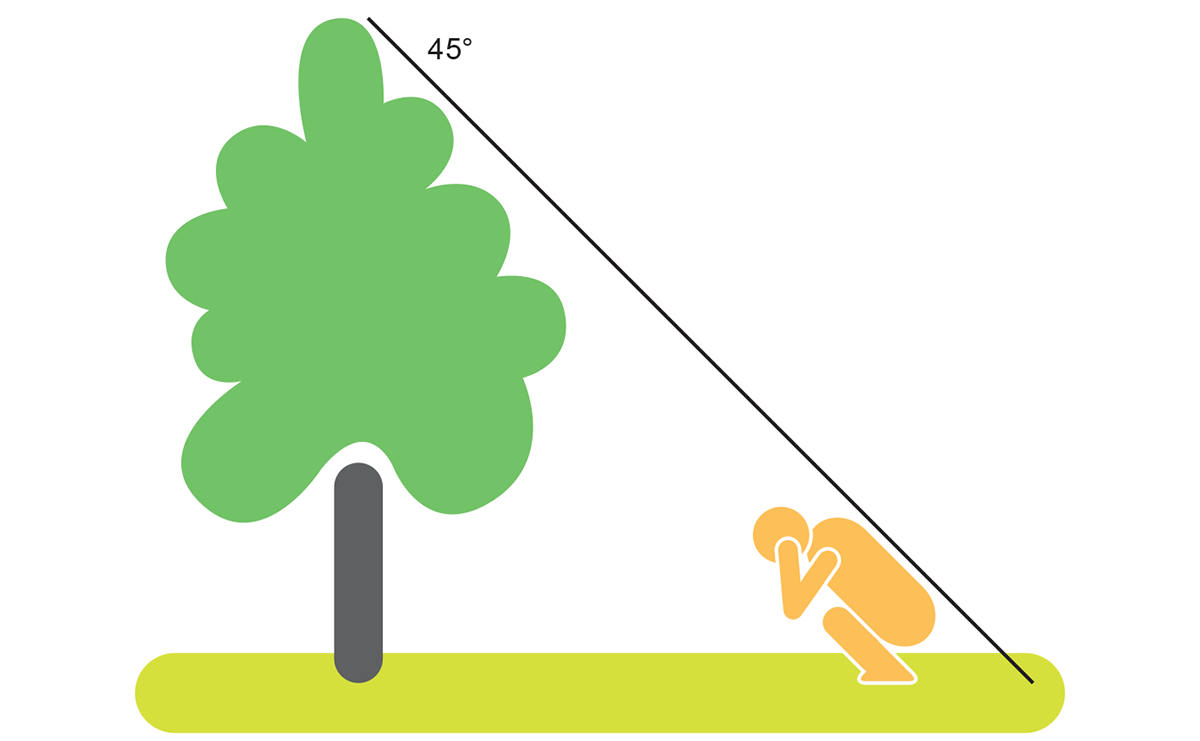Protection against lightning
Following protection instructions is simple, easy, and inexpensive, so despite the rarity of lightning damage, it's always worth following them whenever danger seems imminent.
The likelihood of a strike is very high if hair stands on end (or even feels like it) or if there are discharges visible on nearby power poles, trees, etc. Lightning is electrical current, and the dangers are similar to those of an electric shock: cardiac arrest, respiratory arrest, and usually less dangerous burns.
Here are guidelines mainly for personal protection, not for protecting buildings or equipment. Protection instructions are based on recommendations from international expert groups, so they are backed by both experience and scientific foundations.
Protection guidelines briefly
Indoors, avoid using electrical devices, landline phones, things attached to water pipes, and fireplaces, and keep away from them.
Outdoors, a car or other metal-bodied vehicle provides good protection - avoid biking, whether on foot or motorcycle.
On water, if possible, dock and avoid the shoreline. A sailboat requires lightning protection.
Out in the open, crouch near a large tree, not directly under it or in an open area. Do not use an umbrella.

Protection indoors
Direct lightning strikes to a house are quite rare. Lightning seeks the ground and travels best along conductive structures. These include TV antennas and chimneys, through which lightning can enter a building and still hit people. So it's best to stay away from fireplaces and disconnect external antennas from TVs and radios.
Power and phone lines cover wide areas, and strikes to overhead lines are common. A dangerously high overvoltage is created in the line, which spreads far from the point of impact. When there is thunder nearby, avoid using electrical appliances and landline phones (mobile phones are, of course, safe). This overvoltage can be called an indirect lightning strike.
Whether the strike is direct or indirect, when it occurs, it is also necessary to check for the possibility of fire, as a lightning discharge can jump through, for example, wooden structures, heating them to ignition point. Note that an ungrounded metal roof does not provide protection because lightning striking the roof can discharge to the ground through ignitable structures.
Protection outdoors
Vehicles and boats
If a car or caravan is available, their metal shell prevents electric current from penetrating inside (the same applies to, for example, airplanes and covered metal boats). However, it is advisable not to touch, for example, the car radio and metal parts of the body. The protection is based on the fact that a hollow metal structure acts as a so-called Faraday cage.
Rubber tires are not relevant for protection: lightning, which clears its path through kilometers of insulation, i.e., air, can also crawl a few centimeters along the surface of the tire to the ground. If lightning strikes a vehicle, at least check the condition of the tires.
Note: In modern cars, the windshield is larger and more inclined, and part of the roof may be glass, so there is correspondingly less protective metal above the head. So it is wise to stop the car and maybe even move to the back seat if possible.
A sailboat, whose mast and shrouds' lower ends are connected to each other and further to the water directly or through the keel with, for example, metal wires, also forms a protective cage, although the situation may not seem very enviable compared to a car. On the water, there is ample horizon for weather observation, so it is advisable to dock early if possible. Swimmers and small boat sailors are so close to the shore that they can seek safety from the land. In addition to lightning, stormy gusts of wind also pose a danger.
Out in the open
When there is no protection from buildings or vehicles, the temptation to seek shelter in the wrong way can become significant. What protects from heavy rain can attract lightning: using an umbrella or going under a tree is extremely dangerous. So it is better to get wet. A large tree can provide protection from lightning only if you stand at a distance equal to its height and crouch with your legs together. High places should be avoided, as well as the shoreline.
Crouching is the only way when in the open, such as in a field or on a golf course. Rubber boots do not protect against a direct lightning strike (compare with the car tire mentioned above), but they can protect against the so-called step voltage caused by lightning striking nearby. Biking or motorcycling should be interrupted, and one should move away from them.
